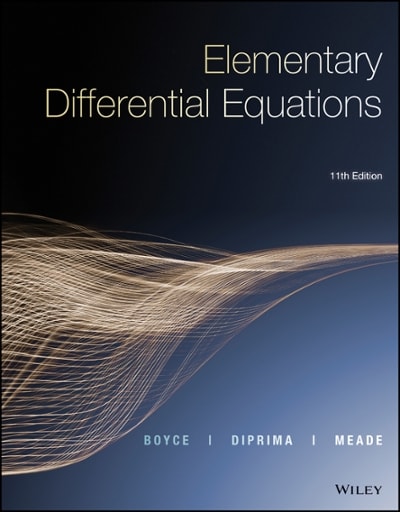Question
4. Curving Test Scores: (4 points each) A professor gives a test, and the scores are normally distributed with a mean of 60 and a
4. Curving Test Scores: (4 points each)
A professor gives a test, and the scores are normally distributed with a mean of 60 and a standard deviation of 12. She plans to curve the scores.
A. If she curves by adding 15 to each grade, what is the new mean and standard deviation?
B. Is it fair to curve by adding 15 to each grade? Why or why not?
C. If the grades are curved so that grades of B are given to scores above the bottom 70% and below the top 10%, find the numerical limits for a grade of B. [Use algebra/Table A-2 and StatCrunch]
D. Which method of curving the grades is fairer: adding 15 to each original score or using a scheme from part(c)? Explain.
Unbiased estimator
5) A. What is unbiased estimator? (2 points)
B. For the following statistic, identify those that are unbiased estimators: mean median, range, variance, proportion. (2 points)
C. Determine whether the following is true or false: " The sample standard deviation is a biased estimator, but the bias is relatively small in large samples, so s is often used to estimate ." (2 points)
6. Scores on the Gillian Autism Rating Scale (GARS) are normally distributed with mean of 100 ( =100) and standard deviation of 15(=15). A sample of 64(n= 64) GARS scores is randomly selected and the sample mean is computed.
A. Describe the distribution of such sample means. (2 points)
B. What is the mean of all such sample means? (2 points)
C. What is the standard deviation of all such sample means? (2 points)
7. Annual Incomes Annual incomes are known to have a distribution that is skewed to the right instead of being normally distributed. Assume that we collect a large (n>30) random sample of annual incomes.
A. Can the distribution of incomes in that sample be approximated by a normal distribution because the sample is large? Why or why not? (2 points)
B. What is the approximate shape of the distribution of the sample means (Uniform, normal, skewed, other? (2 points)
C. What value do the sample means target? That is, what is the mean of all such sample means? (2 points)
8. In a standardized IQ test from Question #3, scores were normally distributed with a mean score of 100 ( =100) and a standard deviation of 15 (=15) [Use algebra/Table A-2 and StatCrunch]
A. If one individual from this population is randomly selected, what is the probability that his/her IQ score is greater than 107? (2 points)
B. Using the information from Question #8 above, if a random sample of 16 people is selected from this population. What is the probability that the mean IQ score of the sample is greater than 107? Is this unusual event? (3 points)
C. Are you more likely to randomly select one person with an IQ score greater than 107 or are you more likely to randomly select a sample of 16 people with a mean IQ score greater than 107? Explain? (3 points)
9. The population mean annual salary for environmental compliance specialists is = $63, 500. A random sample of 35 specialists is drawn from this population. Assume =6100 (Adopted from Salary.com). What is the probability that the mean annual salary of the sample is less than $60,000? Interpret the results. [Use algebra/Table A-2 and StatCrunch] (4 points)
10. Make a decision A machine used to fill a gallon-sized paint cans are regulated so that the amount of paint dispensed has a mean of 128 ounces and a standard deviation of 0.2 ounce. You randomly select 40 cans and carefully measure the contents. The sample mean of the cans is 127.9 ounces. Does the machine need to be reset? Explain your reasoning. [Use algebra/Table A-2 and StatCrunch] (4 points)
Step by Step Solution
There are 3 Steps involved in it
Step: 1

Get Instant Access to Expert-Tailored Solutions
See step-by-step solutions with expert insights and AI powered tools for academic success
Step: 2

Step: 3

Ace Your Homework with AI
Get the answers you need in no time with our AI-driven, step-by-step assistance
Get Started


